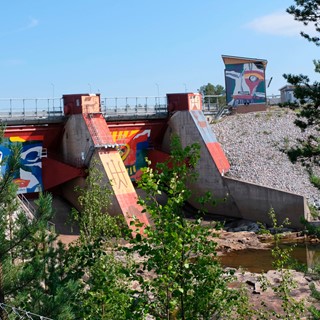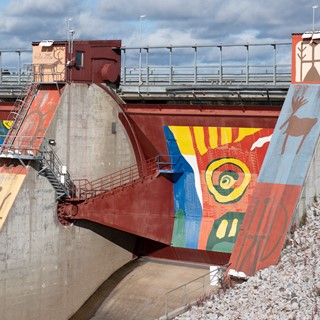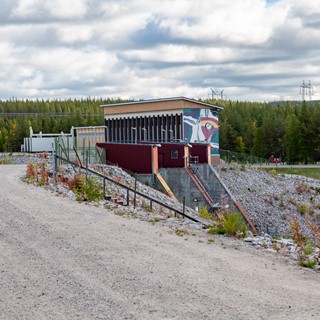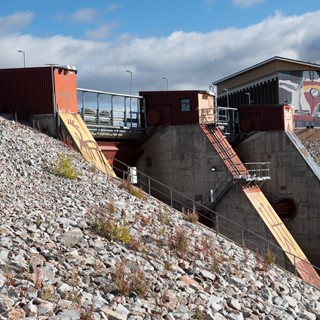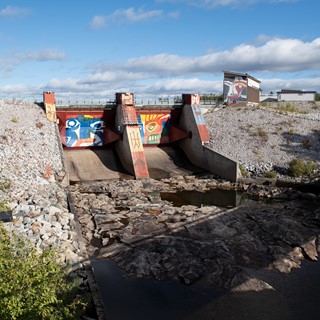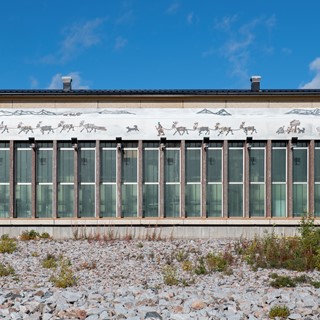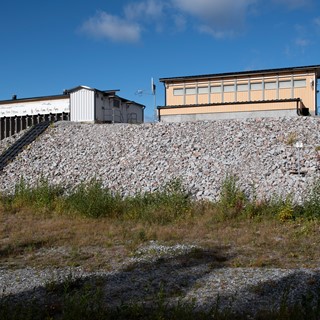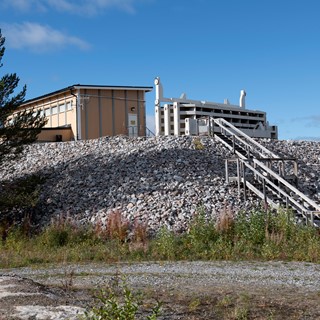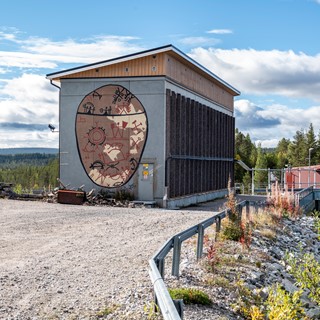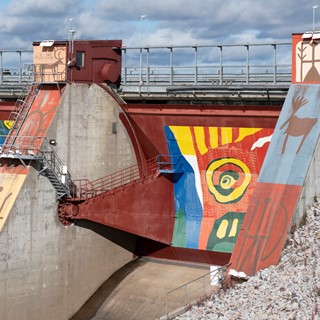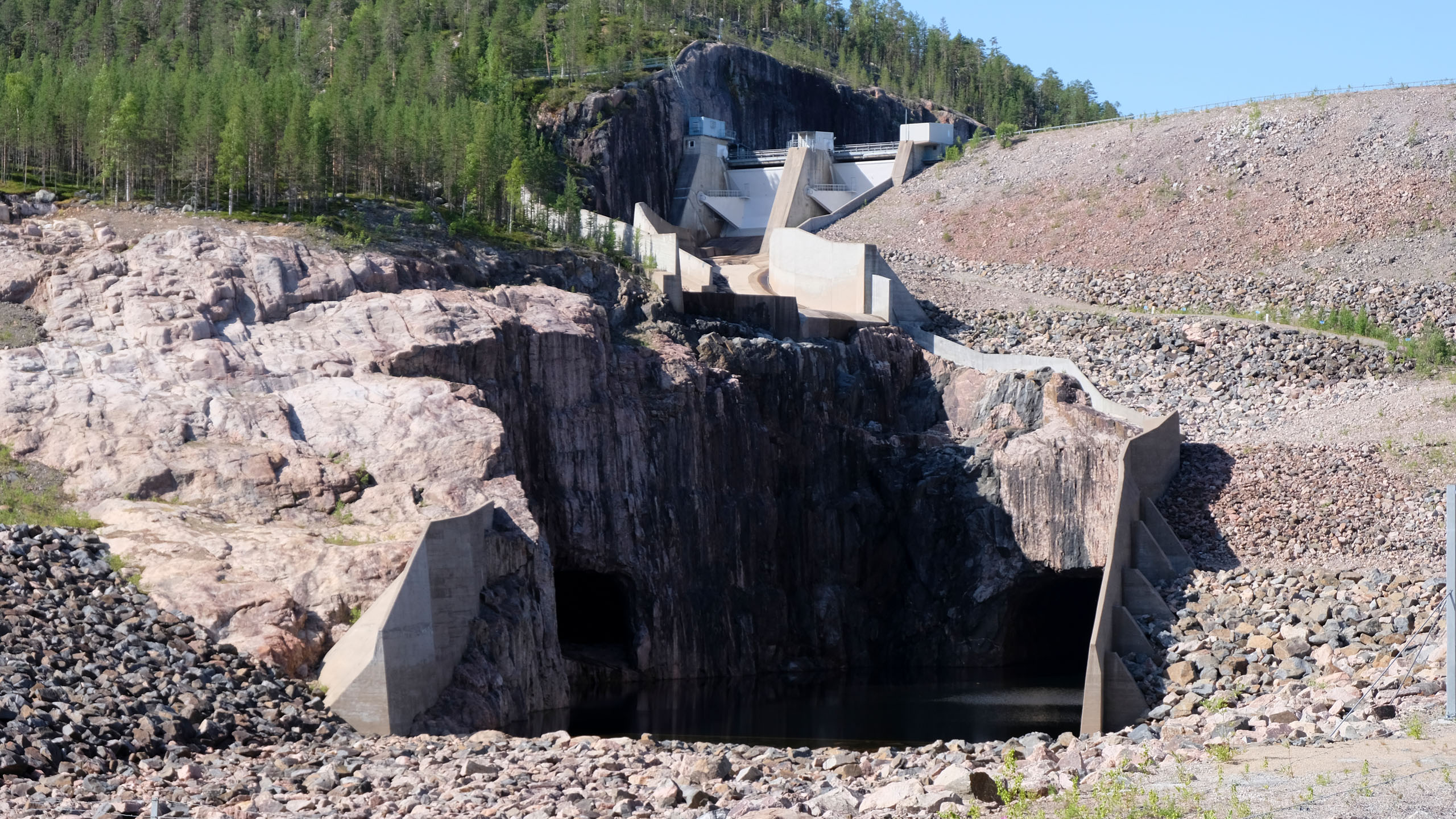History
When Akkats’ power plant was built, Lake Vaikijaure was regulated, which meant that waterfalls Kaitumfallet and Akkatsfallet disappeared. Weirs have been created in the riverbed in connection to the power plant, and to compensate for the waterfalls, which used to be a tourist attraction, Akkats was turned into a show station, equipped with ten aquariums, which are unfortunately no longer there. Akkats’ power plant is a subterranean facility with a head of 46 metres and a two-kilometre long intake tunnel.
Akkats power plant was opened on the 9th of August 1973, but it wasn’t until the eighth attempt, on the 25th of August, that the power plant finally started working. Vattenfall lost almost two million SEK because of the delayed start, which was due to a leak and a circulation error in the power plant’s turbine.
In 2002, an accident occurred at the power plant, and in spite of extensive repairs, only 80 per cent of the original production capacity could be salvaged. To increase the power plant’s capacity, Vattenfall decided to exchange the big, old power generation unit with two smaller, more efficient ones, in 2008. Put together, the two new power generation units produced 26 GWh, enough to heat 1,200 homes.
At its peak, 235 people worked at the Akkats construction, but since the power plant was built when cars were common, no great local measures were needed. Three bachelors’ facilities were erected, however, with room for 100 people, plus a building of bedsits with room for eight people.
Akkats’ power plant is located accessibly just by European route 45. You can’t miss it, especially considering the murals that are on the dam gates and the intake house. Pirak’s and Lindström’s artworks on the Akkats dam were inaugurated on the 5th of February 2000, and had then been harshly criticised by some Sami people in the county’s local paper. They felt that it was inappropriate to decorate the dam with Sami motifs, as the Sami people had been so adversely affected by the hydropower plant’s effect on nature.
The artworks on the dam gates are painted by Bengt Lindström. On one dam gate is the image of a sieidi, and on the other is artwork ‘The Eye of the Noaidi’. Lindström also painted the artwork found on the side of the intake house, depicting Sarakha, one of the four sacred Akkas. Lars Pirak’s artwork is found on the 22-metre long and seven-metre tall intake house of the power plant. Pirak’s artwork is called Radio Manná Álas, which means the ‘rajd’ (line of reindeer) to the west. The artwork itself is two metres tall.

Images
All pictures below are part of the power plant's history. All images are copyrighted. You may use the images for personal use but the images may not be used in commercial contexts or printed matter without our permission. Click on the pictures to enlarge them.
Stories
Here you can read other people's stories about the power plant. And if you have your own story, please share it. Whether you want it to be published on the site or not, we are interested in all stories.
Do you have a story about the powerplant or life around the river?
Send us your story
Visitor information
Below you can read about everything you need to know before a possible visit to the power plant. When it is best to visit the power plant, how to find here and about the rules that apply in the area.

